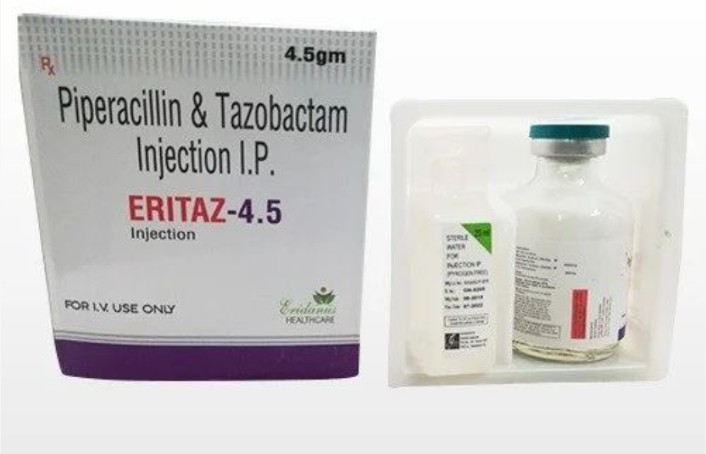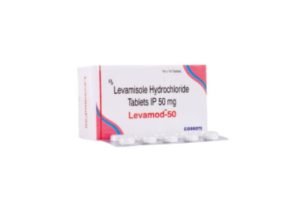
Here’s a detailed overview of Piperacillin:
Description:
Piperacillin is a broad-spectrum beta-lactam antibiotic in the penicillin class, specifically a ureidopenicillin. It has a broad activity against Gram-negative bacteria, including Pseudomonas aeruginosa, as well as some Gram-positive bacteria. It works by inhibiting bacterial cell wall synthesis, leading to cell death.
Brand Names:
- Pipracil (common brand name)
Available Forms & Strengths:
- Injection (IV/IM):
- Piperacillin sodium: Typically available in vials containing 2 g, 4 g, or 10 g.
Uses:
Piperacillin is used to treat a variety of infections, including:
- Urinary Tract Infections (UTIs): Particularly those caused by resistant Gram-negative organisms like Pseudomonas aeruginosa.
- Respiratory Tract Infections: Such as pneumonia.
- Intra-abdominal Infections: Including peritonitis and post-surgical infections.
- Skin and Soft Tissue Infections: Including complicated infections.
- Bone and Joint Infections: Particularly those involving resistant Gram-negative bacteria.
- Sepsis: Often used in combination with other antibiotics for broad-spectrum coverage.
Side Effects:
- Common:
- Gastrointestinal: Nausea, vomiting, diarrhea.
- Allergic Reactions: Rash, itching, and, rarely, anaphylaxis.
- Less Common:
- Hematologic: Changes in blood counts, such as thrombocytopenia or leukopenia.
- Renal: Potential nephrotoxicity, particularly with high doses or in patients with pre-existing renal conditions.
- Superinfections: Risk of overgrowth of non-susceptible organisms like Clostridium difficile.
Dose:
- Adults:
- IV/IM: Typically 3 g to 4 g every 6-8 hours, depending on the severity and type of infection.
- Children:
- Dosing is generally based on weight and infection severity. Typical pediatric dosing is 100-200 mg/kg/day divided into 3-4 doses.
Contraindications:
- Hypersensitivity: Known allergy to Piperacillin or other penicillins.
- Renal Impairment: Use with caution in patients with kidney dysfunction due to the risk of drug accumulation and nephrotoxicity.
Drug Interactions:
- Anticoagulants: Piperacillin may enhance the effects of anticoagulants like warfarin, increasing bleeding risk.
- Other Antibiotics: Piperacillin may have synergistic or antagonistic effects when used with other antibiotics.
- Methotrexate: Piperacillin may reduce the renal clearance of methotrexate, potentially increasing toxicity.
Warnings:
- Allergic Reactions: Serious reactions, including anaphylaxis, can occur. Discontinue immediately if severe allergic symptoms arise.
- Renal Monitoring: Regular monitoring of renal function is advisable, especially in patients with pre-existing kidney issues.
- Superinfection Risk: Prolonged use can lead to overgrowth of resistant organisms or fungi.
Special Considerations:
- Pregnancy: Piperacillin is classified as Category B. Generally considered safe during pregnancy, but should be used when clearly needed.
- Breastfeeding: Piperacillin is excreted in breast milk in small amounts. It is usually considered safe for use during breastfeeding, but monitoring for adverse effects in the infant is recommended.
- Pediatric Use: Piperacillin is used in children, with dosing adjusted based on body weight and the type of infection.
Doctor Advised:
- Complete the full course of Piperacillin as prescribed to ensure effectiveness and reduce the risk of bacterial resistance.
- Inform your healthcare provider of any history of allergic reactions to penicillins or other beta-lactam antibiotics.
- Monitor for any side effects, such as gastrointestinal issues or signs of an allergic reaction, and seek medical attention if necessary.
Conclusion:
Piperacillin is a potent antibiotic used to treat a range of serious bacterial infections, particularly those caused by resistant Gram-negative organisms. It is effective for infections such as UTIs, pneumonia, and sepsis. While generally safe, it requires careful monitoring for potential side effects, especially in patients with renal impairment or those on multiple medications.







